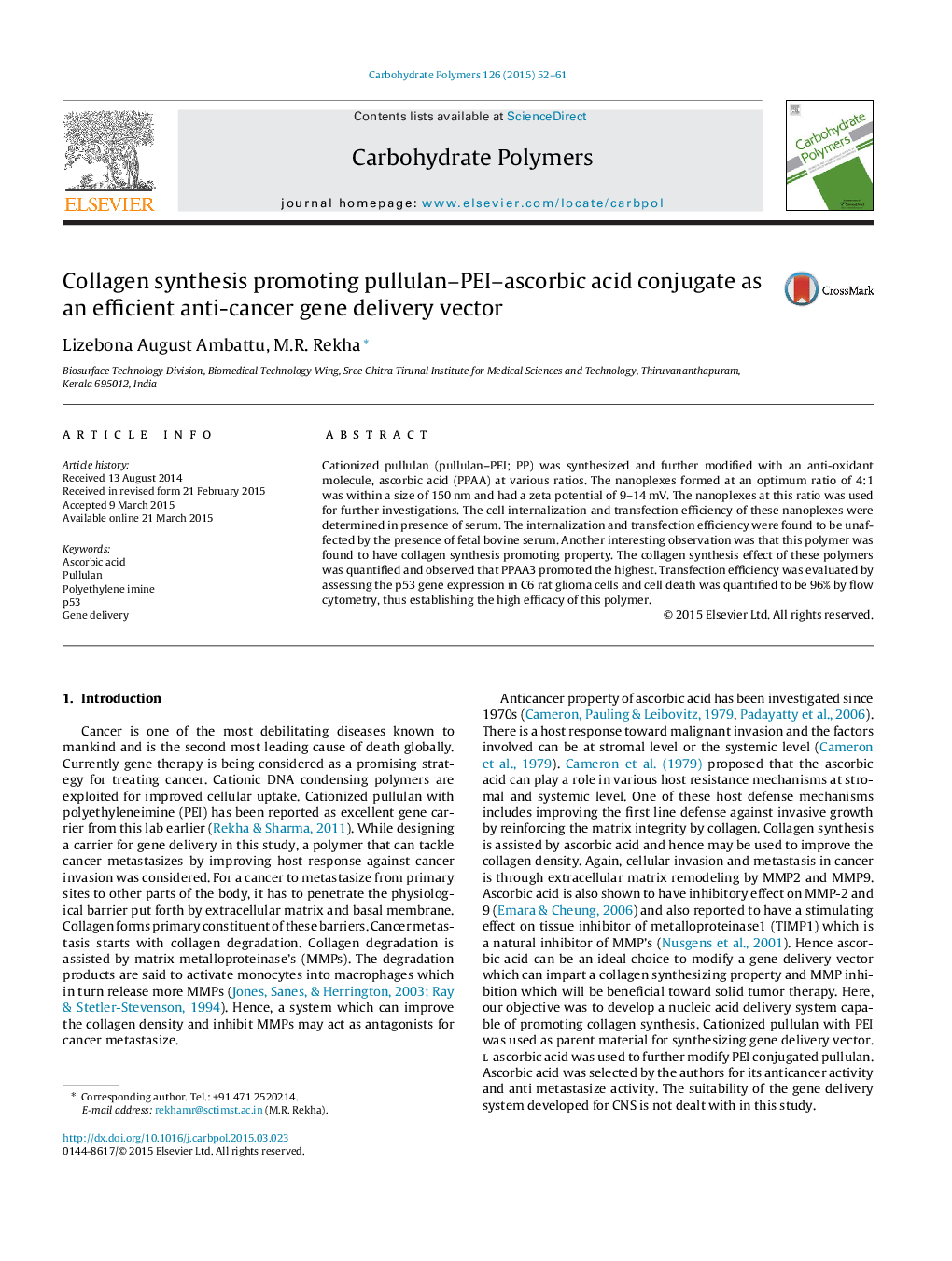| Article ID | Journal | Published Year | Pages | File Type |
|---|---|---|---|---|
| 1383607 | Carbohydrate Polymers | 2015 | 10 Pages |
•Pullulan–PEI–ascorbic acid (PPAA) was synthesized toward anti-cancer gene delivery.•PPAA was found to have collagen synthesis promoting property.•The transfection efficiency of the nanoplexes was unaffected in presence of serum.•Cell death by PPAA mediated p53 transfection in C6 glioma cells was 96% by FACS.
Cationized pullulan (pullulan–PEI; PP) was synthesized and further modified with an anti-oxidant molecule, ascorbic acid (PPAA) at various ratios. The nanoplexes formed at an optimum ratio of 4:1 was within a size of 150 nm and had a zeta potential of 9–14 mV. The nanoplexes at this ratio was used for further investigations. The cell internalization and transfection efficiency of these nanoplexes were determined in presence of serum. The internalization and transfection efficiency were found to be unaffected by the presence of fetal bovine serum. Another interesting observation was that this polymer was found to have collagen synthesis promoting property. The collagen synthesis effect of these polymers was quantified and observed that PPAA3 promoted the highest. Transfection efficiency was evaluated by assessing the p53 gene expression in C6 rat glioma cells and cell death was quantified to be 96% by flow cytometry, thus establishing the high efficacy of this polymer.
